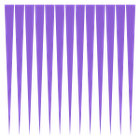A.Y. 2023/2024
_
You may see the available courses schedule on this Google Calendar
The Calendar will be updated as soon as the info is available.

Network Science: an introduction for applied mathematicians
Francesca Arrigo (Strathclyde University, UK)
type: fundamental courses area: interdisciplinary
CANCELED
15 h period: March - June 2024
This graduate level course will overview the mathematical theory underpinning popular tools and algorithms in network science. After a brief introduction to graph theory, the course will move on to describing central concepts in complex networks including (but not limited to) centrality measures, motifs and clustering.
Learning Outcomes:
- Classify problems addressed by network scientists;
- Develop a mathematical understanding of classical tools;
- Criticize current literature on the topics of the course.
referent: Valeria Simoncini

Matrix and numerical methods in the analysis of complex networks
Dario Fasino (University of Udine)
type: fundamental courses area: interdisciplinary
15 h period: 22-23-24 July, 23-24-25 September
schedule: 22/07 10:30-12:30, 15-16 Seminario II
23/07 10:30-12:30, 15-16 Seminario I
24/07 10:30-12:30, 15-16 Seminario I
30/09 10:30-12:00, 14:00-15:30 Seminario VIII piano
1/10 10:30-12:00 Seminario 2, 14:00-15:30 Arzelà
The course is divided into two parts, the first one of 9 hours to be carried out in July, the second one of 6 hours to be carried out in September.
The first part program includes these topics:
• Brief overview of network science.
• Graphs and matrices: connectivity concepts, adjacency matrix, non-negative matrices, Perron-Frobenius theory
• Classic centrality concepts based on shortest paths and paths on graphs.
• Measures of centrality, similarity and distance between nodes based on spectral techniques and matrix functions (PageRank, HITS, Katz-Hubbel indices, Estrada)
• Discrete-time Markov chains: ergodic chains, average access and return times.
• Matrix techniques for the localization of clusters, core-periphery or quasi-bipartite structures.
• Introduction to second-order random paths: non-backtracking paths, nonlinear PageRank.
The second part of the course may include in-depth analysis of some topics from the first part, dynamic systems on networks, other more advanced topics or laboratory activities, also based on the interests and skills of the participants.
The course includes evaluation tests that can also be carried out remotely.
referent: Valeria Simoncini

Topics in Cloud and High-Performance Computing
Ozalp Babaoglu
type: fundamental courses area: INF-01
12 h schedule: March 18 - 21 2024
https://www.cs.unibo.it/~babaoglu/chpc/
Two recent technological trends have emerged as being undeniable:
(i) an increasing number of services and applications are being provided through cloud computing,
(ii) scientific progress is increasingly being driven by data and computation through highperformance computing.
In both cases, the platforms that they run on no longer resemble pizza boxes or refrigerators, but warehouses full of computers. Large portions of the hardware and software resources in these facilities must continue to work correctly and in concert to efficiently deliver services, even in the presence of errors and failures.
This goal can only be achieved through a holistic approach to their design and deployment where the datacenter itself is treated as one massive warehouse-scale computer. In this course we will examine the technical challenges that need to be confronted in
modern cloud and high-performance computing.
We will examine a number of innovative data-driven techniques that can be employed to affront important questions including their energy efficiency and reliability.
referent: Pierluigi Contucci
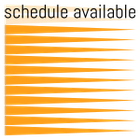
Applications of logic to algebraic invariants in topology
Aristotelis Panagiotopoulos (Universität Wien)
type: fundamental courses area: MAT-01
12 h schedule: February 6 (Seminario VIII piano), 8 (aula Pincherle), 13 (aula Enriques), 15 (aula Arzelà), 20 and 22 (Seminario II) 2024 / h. 14:00 - 16:00
Zoom Link for the fist lecture on February 6: https://unibo.zoom.us/j/81175916425?pwd=b3pZZWZjMlpYRTc2azdtS1JnTjBodz09
One of the leading questions in many mathematical research programs is whether a certain collection of objects can be classified under some notion of equivalence using some “simple” invariants. Invariant descriptive set-theory provides a formal framework for measuring the intrinsic complexity of classification problems and for establishing such negative anti-classification results. In this course we will take a deep dive into this anti-classification "toolkit" and we will show how to use topological dynamics as obstruction to classification by "simple" types of invariants. We will cover both classical results, such as Hjorth's theory of turbulence, as well as some very recent developments in relation to algebraic topology and classification by (co)homological invariants.
referent: Martino Lupini
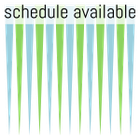
Derived Categories of Rational Homogeneous Varieties
Marco Rampazzo
type: advanced courses area: MAT-02/03
18 h schedule:
- March 5, h. 16-18 - Bombelli
- March 6, h. 15-17 - Seminario II
- March 19, h.16-18 - Bombelli
- March 20, h. 15-17 - Seminario II
- March 26, h. 16-18 - Bombelli
- March 27, h. 15-17 - Seminario II
- April 2, h. 16-18 - Bombelli
- April 3, h. 15-17 - Seminario II
- April 9, h. 16-18 - Arzelà
The aim of the first part of this PhD course is to give a detailed introduction to the construction of the derived categories of coherent sheaves for a smooth projective variety: after reviewing the no#tions of additive, abelian and triangulated categories we describe the derived category of an abelian category, and we apply such construction to the category of coherent sheaves. Along the way, we establish the six-functor formalism and we illustrate some examples. The second part of the course introduces the notions of semiorthogonal decompositions and exceptional collections, as a main ex#ample we consider Beilinson’s full exceptional collection for Pn (and Kapranov’s generalization to Grassmannians). Moreover, we describe the classical results about semiorthogonal decompositions of blowups, projective bundles and hyperplane sections of projective bundles, together with some further generalizations. We establish the concept of mutations of exceptional objects, and give some examples and applications. In the final lectures we consider recent results and open questions in the study of derived categories of homogeneous varieties.

Geometry and combinatorics of Coxeter groups
Christophe Hohlweg (Université du Québec à Montréal)
type: advanced courses area: MAT-02/03
20 h
schedule: March 25 h. 14-16 / April 3 h. 11-13 / 4 h. 15-17 / 8 h. 14-16 / 10 h. 11-13 / 22 h. 16-18 / 24 h. 11-13 / 29 h. 14-16 - room: seminario II / except March 25 aula VII piano, April 3 seminario I.
Coxeter groups play a fundamental role in several areas of mathema6cs: they occur as Weyl groups in Lie theory, Kazhdan-Lusztig theory, for Cluster algebras or in algebraic geometry; they are the discrete reflection groups acting on spaces of constant curvature in geometry and they are fundamental to define buildings in geometric group theory. Properties of these groups are often key to a deep understanding of the main relevant structures for these areas. We will start by covering the basics of Coxeter group theory: exchange and deletion condi6ons, Matsumoto theorem, geometric representations and root systems. We will apply
the theory to show that any discrete group generated by reflections in spherical, Euclidean or hyperbolic geometry is a Coxeter group. Then we will be discussing the interplay between root systems, the weak order, the Bruhat order and the Cayley graph with its word-metric. We will end this part by showing that Coxeter groups are automa6c (Brink-Howlett theorem). The final part of this class will be dedicated to current research developments. In particular, we will be focusing our attention on Garside shadows, Shi arrangements and their relationship with the (still open) word problem in Artin-Tits (braid) groups and the bi-automaticity of Coxeter groups. Exercises and open problems (old and new) will be given along the lectures.
referent: Riccardo Biagioli
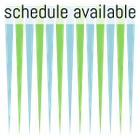
Introduction to bounded cohomology and simplicial volume
Marco Moraschini, Filippo Sarti
type: advanced courses area: MAT-02/03
25 h schedule: on Mondays and on Fridays February 12 - March 15 2024 h. 10:30 - 13:00 room Seminario II except Feb 12: Seminario I and Feb 16: aula Arzelà.
Bounded cohomology of discrete groups is a functional-analytic variant of ordinary cohomology introduced by Trauber and Johnson in the seventies in the context of Banach algebras. Later, Gromov extended the notion of bounded cohomology to topological spaces in his pioneering paper “Volume and bounded cohomology” (1982). Since then bounded cohomology has grown as an independent and active field with applications to geometric group theory, geometric topology and Riemannian geometry.
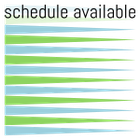
On Eulerian and Narayana numbers and their applications
Roberto Pagaria
type: fundamental courses area: MAT-02/03
22 h schedule: November 6, 13, 20, 27, December 4, 11, 18 2023 / h. 14 - 16
We will introduce Eulerian and Narayana numbers using a modern approach with a particular attention to examples. The
course focuses on the presence of those numbers in topology, in representation theory and other parts of Mathematics. We will
present generating functions for those sequences, famous identities, counting properties (such as pattern-avoiding permutations,
Dyck paths, binary trees, non-crossing partitions...) and gamma-nonnegativity. Finally, we consider application to hyperplane
arrangements, polytopes and Coxeter groups.
learning verification mode: seminar on course topics
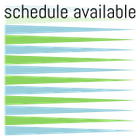
Shapes, symmetries and arrangements II
Progetto di Ateneo "Bando Strutture"
type: fundamental courses area: MAT-02/03
18 h + 18 h
referents: Giovanni Mongardi, Roberto Pagaria, Andrea Petracci.
Part 1
lecturer: Masahiko Yoshinaga (University of Osaka)
6 h schedule: 6-10 November 2023
Part 2
lecturer: Yoshinori Gongyo (University of Tokyo)
6 h period: TBA
Part 3
lecturer: Shouhei Ma (Tokyo Institute of Technology)
6 h schedule: April 22 - 23 - 24 , 2024 / h. 14-16 / rooms: Tonelli - Bombelli - Arzelà.
---
Part 4
lectures: Kota Yoshioka
6 h schedule: October 28-30-31, 2024 / h. 14-16/ room: Tonelli
+ 18 h on-line, lecturers: Yoshioka, Oguiso, Tanaka (TBC) period: TBA
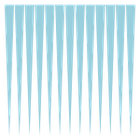
Automorphisms of compact hyperkähler manifolds
Annalisa Grossi (Université Paris-Saclay)
type: advanced courses area: MAT-03
12 h period: March - May 2024
A hyperkähler manifold X is a compact, complex, Kähler manifold such that π1pXq “ 0 and H0 pΩ 2 Xq “ C ¨ σX, where σX is an everywhere non-degenerate holomorphic 2-form. Due to the Beuville-Bogomolov decomposition theorem, hyperkähler manifolds are one of the building blocks of compact complex Kähler manifolds with trivial canonical bundle. In dimension 2 hyperkähler manifolds are K3 surfaces. The first example of hyperkähler manifolds in dimension grater then two was exhibited by Beauville in the 80’s. After Beauville, twenty years later, O’Grady exhibited two new deformation classes, one in dimensions six and one in dimension ten. These varieties turns out to be an excellent class for proving general conjectures in algebraic geometry, but finding new examples is quite hard. For this purpose, to study automorphisms of hyperkähler manifolds plays a crucial role: one possible expectation is to construct new deformation classes of hyperkähler manifolds as fixed locus of (symplectic) automorphisms. Another relevant reason to study automorphisms is related to a recent research direction regarding singular hyperkähler varieties. Recently some main results that are true for hyperkähler manifolds have been proved for a class of varieties that are hyperkähler with mild singularities. The Beauville-Bogomolov decomposition theorem was proved for singular varieties, and it was obtained in 2018 thanks to the combined efforts of Höring- Peternell (Inv. Math 2019), Druel (Inv. Math 2018), and Greb-Guenancia-Kebekus (Geom. Topol. 2019). A large class of examples of these varieties is made by quotients of smooth hyperkähler manifolds by a symplectic group.
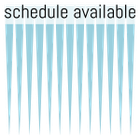
Fibrati iperolomorfi e loro spazi di moduli
Francesco Meazzini
type: advanced courses area: MAT-03
30 h schedule: November 2 - December 21 / on Tuesdays aula Arzelà and Thursdays Seminario VIII piano / 14:00 - 16:00
Il corso si incentrerà sullo studio dei fibrati iperolomorfi sulle varietà HyperKaehler (HK), e terminerà con uno studio dettagliato della categoria derivata di queste varietà. Successivamente, proseguirà con un gruppo di lavoro sui fasci modulari, argomento che costituisce una generalizzazione dei fibrati proiettivamente iperolomorfi
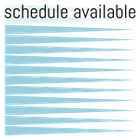
Introduction to toric varieties
Andrea Petracci
type: fundamental courses area: MAT-03
20 h schedule: November 29, h 16-18 / aula Bombelli
December 5, h. 9-11 / aula Cremona
December 7, h. 12-14 / seminario VIII piano
January 9, h. 16-18 / aula Vitali
January 11, h. 16-18 / aula Seminario VIII piano
February 15, h. 11-13 / aula Vitali
February 19, h. 14-16 / aula Tonelli
February 22, h. 16-18 / aula Tonelli
February 26, h. 14-16 / aula Tonelli
February 29, h. 14-16 / aula Tonelli
Toric varieties are algebraic varieties which are constructed in a combinatorial flavour from objects of discrete geometry, such as lattice polytopes and cones. There is an (almost perfect and very fruitful) dictionary between the algebro-geometric properties of toric varieties (e.g. dimension, singularities, Betti numbers) and the combinatorial properties of their combinatorial avatars. For this reason, toric varieties lie at the intersection of algebraic geometry, discrete geometry, algebraic combinatorics and matroids, and also of symplectic geometry and differential geometry. In this course we present the 3 basic constructions of toric varieties (from a fan, from a polytope, from a linear action of an algebraic torus on an affine space) and the main properties of toric varieties (e.g. singularities, line bundles and divisors, cohomology of line bundles, topology, resolution of singularities). The target audience of this class is PhD students in algebra or in geometry, not necessarily algebraic geometry. Only very basic knowledge of algebraic geometry is needed: in particular, we will assume that the participants are a bit familiar with affine varieties over algebraically closed fields and know how to manipulate polynomials and ideals of polynomials. The detailed choice of the topics presented in the course will depend on the knowledge and on the research interests of the audience.
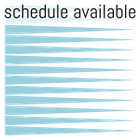
Topological data analysis and persistent homology
Agnese Barbensi (University of Queensland)
type: fundamental courses area: MAT-03
12 h schedule: May 20, 21, 23, 27, 28, and 30 / h. 14:00 - 16:00 / room: Seminario II
The aim of this course is to introduce topological data analysis (TDA) and its main algorithm, persistent homology (PH). PH is a computational tool, whose aim is to study the “shape” of data via topological techniques. PH has been used with increasing frequency and success to quantify the structure of complex data. Among other applications, PH has enabled novel insights in cancer studies, pathology, evolution, ecology and material science.
In this course we will look at the standard PH pipeline, a number of different software programs and computational tools, some real-world applications, and some theoretical generalisations (multiparameter persistence, zig-zag persistence, etc.)
referent: Stefano Riolo
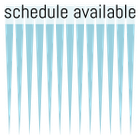
Lectures on Complex Lagrangians
Justin Sawon
type: advanced courses area: MAT-03
6 h period: July 2024
Schedule:
2/07 14-16 aula Bombelli
3/07 14-16 aula Bombelli
4/07 14-16 seminario VIII piano
Abstract:
These lectures will focus on complex Lagrangian submanifolds in compact holomorphic symplectic manifolds. A typical example of such a holomorphic symplectic manifold is the moduli space of stable sheaves on a K3 surface. The majority of the material will concern fibrations by Lagrangian submanifolds, and we will consider existence and classification of such Lagrangian fibrations. We will also see Lagrangian submanifolds that are not part of a fibration, particularly those arising from restricting stable sheaves from Fano threefolds to K3 surfaces.
referent: Giovanni Mongardi
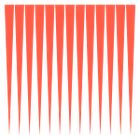
An Invitation to nonlinear Regularity Theory: the stationary and diffusive p-Laplacean
Simone Ciani
type: advanced courses area: MAT-05
18 h schedule:
June 24 - 25 / h. 13:30 - 16.30 / room Seminario I
June 26 / h. 13:30 - 16.30 / room G3 - Geologia
July 2 - 3 - 4 - 5 / h. 14 - 17 / room Seminario I
We will start by briefly recalling known properties of harmonic functions, while approaching more detailedly the properties of solutions to the Heat equation, regarded from a nonlinear viewpoint (no integral representation nor comparison principle). We will then enter the core of the course by building the theory of De Giorgi classes of growth p, exposed for the sake of simplicity only for the case of the p-Laplacean operator. Here we will study:
(1) Local boundedness of local weak solutions;
(2) The phaenomenon of Expansion of Positivity and its consequences:
(a) Harnack inequality and H¨older continuity;
(b) Rigidity properties (Liouville-type theorems).
Hence we will relate these methods to the regularity theory for the quasi minima of integrals of the calculus of variations of growth p. Finally (time permitting) through the method acquainted, we will briefly introduce the state of the art of this theory in the context of parabolic equations: here the non homogeneity between time and space requires a significantly different approach, bearing the name of intrinsic scaling.
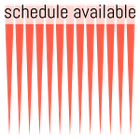
Diffraction Theory and Complex Analysis in Several Variables
Valentin Kunz
type: advanced courses area: MAT-05
12 h schedule: November 7 - December 12 / on Tuesdays / 12 - 2 pm / room Seminario VIII piano (on November 14 room Seminario II).
Abstract. This is a course at the interface of complex analysis, asymptotic analysis and applied mathematics, highlighting recent developments in these areas.
The mathematical theory of diffraction comprises the rigorous study of the interaction of waves with obstacles, which, for example, finds application in civil and aerospace engineering (noise control, antenna technology, solar technology, etc.), and has sparked the development of numerous mathematical techniques during the past century (such as the Wiener-Hopf and Sommerfeld-Malyuzhinets technique). Mathematically, such interaction of waves with obstacles, henceforth referred to as ‘diffraction problem’, can be formulated as boundary value problem to the time-harmonic wave-equation (Helmholtz equation).
In the first half, we mathematically explain the notion of ‘diffraction problem’ and how complex analysis involving a single complex variable has proved to be a powerful tool in studying such wave-propagation phenomena. In the second half, we outline the limitations of classical one complex variable techniques and give an overview of current developments aiming to link the theory of several complex variables to certain unsolved diffraction problems.
Throughout the course, examples and optional exercises are provided to deepen the students’ understanding. No prior knowledge on diffraction theory or complex analysis in several variables is required.
referent: Loredana Lanzani

Fine properties of functions of bounded variation and sets of finite perimeter
Giovanni Eugenio Comi
type: fundamental courses area: MAT-05
16 h schedule:
10 aprile 9:00-12:00 aula Seminario II
17 aprile 9:00-11:00 aula Seminario I
24 aprile 9:00-11:00 aula Seminario II
2 maggio 9:00-12:00 aula Seminario II
8 maggio 9:00-11:00 aula Seminario II
9 maggio 9:00-11:00 aula Seminario II
15 maggio 9:00-11:00 aula Seminario II
A function of bounded variation (BV) is a summable function whose distributional gradient is a finite vector valued Radon measure. Hence, the space of BV functions represents a natural extension of the Sobolev space W^{1,1}, and, due to its crucial weak compactness property, it plays a fundamental role in Calculus of Variations. In particular, there are measurable sets whose characteristic functions belong to the space BV: these are called sets of finite perimeter, and they generalize the idea of manifolds with smooth boundary. Despite being quite irregular, BV functions enjoy interesting fine properties, such as the existence of precise representatives up to codimension one Hausdorff negligible sets. After recalling basic definitions and results, we will introduce the notion of rectifiability and prove De Giorgi’s structure theorem for sets of finite perimeter. Then, we will present the coarea formula and we will exploit it to prove the approximate continuity of a BV function outside its jump set and the absolute continuity property of its gradient. Finally, we will treat the decomposition of the gradient of a BV function and Federer-Vol’pert theorem. Time permitting, the course will also include Vol’pert Leibniz rule and integration by parts formulas for BV functions on sets of finite perimeter.
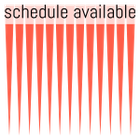
Introduction to the regularity up to the boundary for the Bernoulli type free boundary problems
Diego Moreira (UFC)
type: advanced courses area: MAT-05
5 h schedule:
September 30th h. 11:00-13:00 (aula Bombelli) - link Zoom: https://unibo.zoom.us/j/89821531161?pwd=I1qbabvgKSYWh0556bbVODFsLTqCEU.1
October 1st h. 12:00-13:00 (Seminario 1) - link Zoom: https://unibo.zoom.us/j/89369900929?pwd=O0Qpm3sOxhav5M5oD1i2qN9GQP8vnO.1
October 3rd h. 11:00-13:00 (Seminario 2) - link Zoom: https://unibo.zoom.us/j/89971299845?pwd=x5e2siQ0Z0mVz2bBA8FiDMv29oGJSx.1
In this advanced introduction to the regularity of free boundary solutions, professor Moreira will introduce the main tools useful to face the topics described in the long range program presented in the syllabus. Due to the reduced time available (5 hours), after the introduction and agree with the attending students, he can decide to develop one of the subject contained in the original program.
Proposed Syllabus
(1) Review of the maximum principle for harmonic functions and gradient estimates;
(2) Construction of barriers and quantitative version of the Hopf-Oleinik Lemma for harmonic functions;
(3) Extension of the barrier’s construction to deal with uniformly fully nonlinear elliptic operators with bounded RHS;
(4) Extension of barrier’s construction to unbounded RHS via C 1,α estimates up to the boundary, compactness, and stability of viscosity solutions;
(5) Quantitative Hopf-Oleinik Lemma in the context of inhomogeneous (fully nonlinear) equations;
(6) Landis growth type Lemma on the boundary for supersolutions that measures expansion of level sets from the boundary;
(7) Trace estimates for solution on nontangential points on the fixed boundary (Carlos Kenig approach via Harmonic Analysis);
(8) Propagation of the trace estimate from nontangential points to all points on the fixed boundary via Caffarelli’s geometric iteration scheme;
(9) Review of boundary gradient estimates for Laplace and fully nonlinear operators;
(10) Lipschitz regularity and apriori estimates for solutions to Bernoulli free boundary problems;
(11) Strategy to extend the problem to the case of p−Laplace operator: Revisiting the geometry of Pucci barriers
referent: Fausto Ferrari
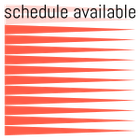
Ipoellitticità per operatori di Hörmander
Gregorio Chinni
type: fundamental courses area: MAT-05
15 h schedule:
20/05 10-13 Seminario 1;
23/05 11-13 Seminario 2;
27/05 10-13 Seminario 1;
30/05 10-13 Seminario 2;
03/06 10-13 Seminario 1;
06/06 10-13 Seminario 1;
10/06 10-13 Seminario 1.
Obiettivo del corso è mostrare alcuni risultati base riguardanti la regolarità delle soluzioni delle equazioni differenziali alle derivate parziali del secondo ordine della forma di Hörmander, in seguito al celebre risultato ottenuto da L. Hörmander nel 1967, [5].
Il risultato in [5] ha risolto il problema dell’ipoellitticità C∞: se l’algebra di Lie generata dai campi vettoriali X` e dei loro commutatori di lunghezza al più r ha dimensione n, ossia quella dello spazio ambiente, allora PH è C∞-ipoellittico.
L’ipotesi del teorema di Hörmander d’ora in poi verrà detta condizione di Hörmander. La prova di tale risultato verrà data seguendo J.J. Kohn, [6]
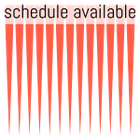
Large solutions for semilinear PDEs
Nicola Abatangelo
type: advanced courses area: MAT-05
16 h
schedule:
20/03 h. 9 - 11, room: seminario II
20/03 h. 16 - 18, room: aula Tonelli
21/03 h. 9 - 11, room: seminario VIII piano
21/03 h. 16 - 18, room: seminario VIII piano
25/03 h. 9 - 11, room: seminario II
25/03 h. 16 - 18, room: aula Arzelà
27/03 h. 9 - 11, room: seminario II
27/03 h. 16 - 18, room: aula Tonelli
Abstract:
In the theory of elliptic PDEs, "large" solutions are those prescribed to present an explosive behaviour at the boundary of the underlying domain. These are a peculiarity of nonlinear equations and they are typically meant to provide with pointwise estimates, universal barriers, and Liouville-type results on all other solutions, but they pose nontrivial problems as to comparison principles, asymptotic behaviour, and uniqueness: this is also due to the interactions of the regularity of the nonlinearity and that of the boundary, beside the lack of the usual tools such as a clear functional framework. Starting from the seminal works of Keller and Osserman about existence, we will mainly focus on uniqueness issues presenting different strategies and some related open problems: a key step (although not the only noteworthy one) in this direction will be a somewhat precise description of the asymptotic profile of the solutions in terms of the nonlinearity and the curvature of the boundary. We will then move on to see applications to other PDE problems, notably the derivation of Liouville theorems for semilinear problems. Time permitting, we will also analyze some qualitative aspects, such as symmetries.
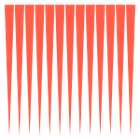
Non-autonomous dynamical systems: invariant manifolds and chaos
Matteo Franca
type: advanced courses area: MAT-05
16 h schedule: March 4 - 27 / on Mondays h. 15-17 and on Wednesdays h. 11-13 / room: Seminario II *Monday March 25 h 11-13*
After reviewing the concept of stability of a critical point for an O.D.E. we shall start by introducing stable and unstable manifolds for critical points of an autonomous O.D.E. (which generalize stable and unstable spaces of the linear case).
Then we will see how these concepts are extended in a non-autonomous context. Afterwards we will give the main ideas concerning the horseshoe construction and the presence of chaotic phenomena arising near transversal intersections between stable and unstable manifolds. Finally we give some hints on Melnikov theory which establishes some conditions sufficient for the persistence of homoclinic trajectories to perturbations and the insurgence of chaos.
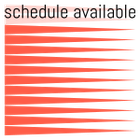
The Heat Equation: Dirichlet and Cauchy problems
Giovanni Cupini, Ermanno Lanconelli
type: fundamental courses area: MAT-05
30 h schedule:
Il corso di dottorato riprenderà a settembre secondo il seguente calendario:
- Lunedì 9 settembre: 9-12 Seminario I
- Giovedì 12 settembre: 9-12 Seminario II
- Venerdì 13 settembre: 9-12 Seminario II
- Mercoledì 18 settembre: 9-12 Seminario II
- Giovedì 19 settembre: 9-12 Seminario II
- Venerdì 20 settembre: 9-12 Seminario II
---
- 16 April h. 9 - 12 Seminario I
- 23 April h. 9 - 12 Seminario II
- 24 April h. 11 - 13 aula Arzelà
- 30 April h. 9 - 12 Seminario II
- 3 May h. 9 - 11 Seminario II
- 7 May h. 9 - 12 Seminario II
- 10 May h. 11 - 13 Seminario II
- 14 May h. 9 - 12 Seminario II
- 17 May h. 9 - 11 Seminario II
- 21 May h. 9 - 12 Seminario II
- 24 May h. 9 - 11 Seminario II
Program:
- The Heat operator H;
- Caloric functions;
- Fundamental solution;
- Solvability of the Cauchy problem;
- Green identity;
- Some representation formulas in terms of H;
- Smoothness of caloric functions and some convergence theorems;
- Weak caloric functions;
- Mean value Theorem for caloric functions;
- Reverse of the Mean Value Property;
- The caloric strong Maximum Principle;
- The weak caloric Harnack inequality;
- Monotone sequences of caloric functions;
- The caloric Harnack inequality;
- The parabolic weak maximum principle for the heat operator;
- Uniqueness for the Cauchy problem;
- Some representation theorems on strips;
- Liouville theorems for caloric functions;
- The caloric Dirichlet problem: the Perron method.
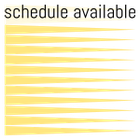
An introduction to stochastic calculus for jump processes
Elena Bandini
type: fundamental courses area: MAT-06
12 h schedule:
- 27/05 11-13
- 30/05 11-13
- 3/06 11-13
- 5/06 9-11
- 7/06 11-13
- 17/07 14:30-16:30
Abstract:
The objective of the course is to provide an introduction to stochastic calculus for jump processes. Starting from the main definitions and results of discontinuous stochastic processes theory, we introduce the stochastic integral with respect to finite variation processes and we investigate its main properties. Moreover, we study stochastic differential equations driven by jump processes, showing an existence and uniqueness result. Finally, we present the Doléans-Dade exponential and we study the martingale property of the stochastic integral.
Program:
- Introduction to pure jump processes: definitions of (marked) point processes, random measures, and associated counting process.
- The Poisson point process and Watanabe theorem. Introduction to stochastic integrals with respect to finite variation processes.
- Stochastic integral with respect to finite variation processes: integration by parts formula and Itô’s formula.
- Introduction to stochastic differential equations driven by pure jump processes: the predictable sigma-algebra and a well-posedness result.
- Linear stochastic differential equations: the Doléans-Dade exponential. The martingale property of the stochastic integral.
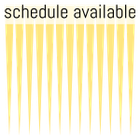
Stochastic differential equations with non-Lipschitz (possible singular) coefficients
Francesco Russo (ENSTA Paris, Institut Polytechnique de Paris)
type: advanced courses area: MAT-06
10 h schedule:
- 13 May 2024, Mon 11:00 – 13:00
- 15 May 2024, Wed 11:00 – 13:00
- 17 May 2024, Fri 11:00 – 13:00
- 20 May 2024, Mon 11:00 – 13:00
- 22 May 2024, Wed 11:00 – 13:00
- 24 May 2024, Fri 11:00 – 13:00
Program:
- Pathwise uniqueness without Lipschitz coeffients.
- Existence and uniqueness in law in the Stroock-Varadhan framework.
- The case of SDEs with distributional drift.
- McKean-Vlasov equations in the case of measurable coefficients.
- McKean-Vlasov equations in the case of distributional coefficients.
referent: Stefano Pagliarani
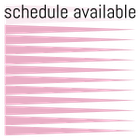
Introduction to Rational Extended Thermodynamics
Takashi Arima (NIT Tomakomai, Japan)
type: fundamental courses area: MAT-07
6 h schedule: November 29 - December 13, 2023 / on Wednesdays / 2:00-4:00 pm / November 29 room Aula Vitali - December 6 and 13 room Seminario VIII piano
This course introduces Rational Extended Thermodynamics (RET), a recently developed theory of non-equilibrium thermodynamics, with a focus on its mathema#tical aspects. The theory leads to the derivation of a hyperbolic system of partial differential equations as its closed field equations that describe fluids, which will be discussed. Specifically, the course will focus on the following three points: (1) Issues with the traditional theory of fluid dynamics: First, we will overview the traditional theory of fluid dynamics, the Navier-Stokes-Fourier (NSF) theory, summarize the problems arising from the fact that it is based on a
parabolic system, and discuss the construction methods of hyperbolic partial differential equation systems beyond the NSF theory.
Additionally, we will re-evaluate the kinetic theory of gases and di#scuss the structure of the system of balance equations describing fluids should have. (2) Construction of RET: We will demonstrate that RET can derive a closed set of field equations based on three requirements: the material frame indifference principle, the entropy principle, and causality. Further, we will discuss the mathematical structure of this hyperbolic system and its limits to parabolic theory as a coarse graining theory of RET. (3) Development of RET: It is known that the structure of the system of balance equations in RET varies depending on the fluid being studied. We will introduce the recently proposed RET for polyatomic gases and discuss the differences from the system for monatomic gases and its singular limit to monatomic gases.
referent: Andrea Mentrelli
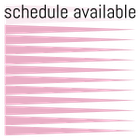
Mathematical foundations of Quantum Machine Learning
Giacomo De Palma
type: fundamental courses area: MAT-07
16 h schedule: April 9 h. 11-13 Seminario VIII piano / April 16 - May 28, on Tuesdays, h. 16-18 Aula Enriques.
Introduction: Dirac notation; The postulates of quantum mechanics; Qubits; Quantum gates; Measurement in the computational basis;
Quantum algorithms: Quantum Fourier transform, Quantum phase estimation, Hamiltonian simulation, HHL algorithm and quantum linear algebra;
Quantum machine learning: Variational quantum algorithms; Input encoding; Variational circuits as machine learning models; The functions expressed by variational quantum models; Combinatorial optimization problems; The quantum approximate optimization algorithm; Potential quantum advantages
L’esame consiste nella presentazione tramite seminario di un articolo di ricerca collegato al programma del corso.
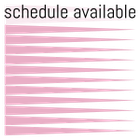
Mathematical Relativity
Andrea Giusti (ETH Zurigo)
type: fundamental courses area: MAT-07
20 h schedule: December 7 h 10-12 / Seminario VIII piano
December 13 h 9-11 / Seminario VIII piano
December 14 h 11-13 / Seminario VIII piano
December 20 h 10-12 / Seminario VIII piano
December 21 h 11-13 / Seminario VIII piano
January 10 h 10-13 / Aula Arzelà
January 11 h 10-13/ Aula Arzelà
January 15 h 10-12/ Aula Arzelà
January 16 h 10-12/ Aula Arzelà
This course covers the basic principles of differential geometry and its application to special and general relativity, some important exact solutions of the Einstein field equations, the singularity theorems, the Cauchy problem in general relativity, and some generalities about (classical) black holes. In detail:
• Short overview of Special Relativity.
• Non-inertial motion and the notion of observer.
• The Equivalence Principle: Newton’s gravity vs. Special Relativity, weak and Einstein’s equivalence principles, physical implications.
• Short review of Differential Geometry, if necessary.
• Postulates of General Relativity.
• Einstein’s field equations: variational derivation;
• Exact solutions & Carter-Penrose diagrams: Minkowski, Schwarzschild, Reissner-Nordstr¨om, Kerr.
• Uniqueness (no-hair) theorems.
• Causality theory on Lorentzian manifolds.
• Singularity theorems: Hawking and Penrose.
• Cauchy problem in General Relativity: Cauchy horizons and loss of predictability
referent: Andrea Mentrelli
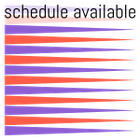
First order nonlinear PDEs: from theory to approximation
Paolo Albano, Silvia Tozza
type: fundamental courses area: MAT-05/08
20 h schedule: first part March 1, 8, 15 and 22, April 5 / on Fridays 14:30-16:30 second part April 9, 12, 16, 19, 23 / on Tuesdays h 14-16 on Fridays h 11-13 / Seminario II
The course aims to give an overview on first order nonlinear partial differential equations (PDEs) from both, a theoretical and a numerical point of view. The first part of the course is an introduction to mathematical control theory and first order Hamilton#Jacobi equations. We begin with the description of some model problems (the minimum time problem, the Mayer prob#lem, the Bolza problem, problems with infinite horizon, ...). Then, we consider the value function of an optimal control problem and the related Hamilton-Jacobi equation (a first order nonlinear PDE). Next, we discuss the existence of a solution of a first order nonlinear PDE, dealing with the method of the characteristics (local classical solution) and the method of vanishing viscosity (global weak solutions). Finally, we discuss the notion of solution in the viscosity sense, providing some basic results on the existence, the regularity, and the uniqueness of the viscosity solution. In the second part of the course, we focus on the numerical approximation of some non-linear PDEs, including the eikonal equation and Hamilton-Jacobi equations. We start comparing schemes based on finite difference and semi-Lagrangian schemes in the linear case, with the related convergence theory. Then, we move to the nonlinear case, also discussing the stability concepts for Hamilton-Jacobi equations and how to get convergence results in that case. Finally, we present examples of stationary and evolutive problems in Image Processing which can be mdeled by this kind of nonlinear PDEs. A small laboratory activity is also planned, with examples of construction of algorithms in MATLAB and numerical simulations.
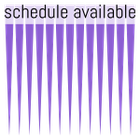
Recent advances in large scale NLA solvers
Valeria Simoncini
type: advanced courses area: MAT-08
14 h
schedule:
24/06 9-11 Seminario II
25/06 9-11 Seminario I
26/06 9-11 Seminario I
01/07 9-11 Aula Arzelà
02/07 14-16 Seminario II
03/07 9-11 Aula Vitali
11/07 2h timetable and room: to be decided
In questo corso verranno presentati ed analizzati gli avanzamenti recenti sui metodi numerici per la risoluzione di problemi di grandi dimensioni di algebra lineare numerica (sistemi lineari, valutazione di funzioni di matrici, ecc.).
In particolare, verranno trattati sia gli aspetti teorici associati alla derivazione dei metodi e la loro comprensione teorica, che il loro uso in contesti applicativi di grande attualita’.
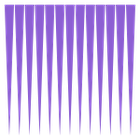
Introductory Machine Learning
Lorenzo Rosasco (Università di Genova)
type: advanced courses area: MAT-08
part of Summer School Mathematics and Machine Learning for Image Analysis
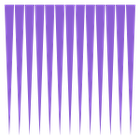
Numerical optimization methods in imaging
Jean-Christophe Pesquet (CentraleSupélec - Université Paris-Saclay)
type: advanced courses area: MAT-08
part of Summer School Mathematics and Machine Learning for Image Analysis
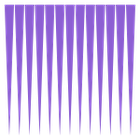
Optimization based machine learning for computational imaging
Ulugbek Kamilov (Washington University in St. Louis)
type: advanced courses area: MAT-08
part of Summer School Mathematics and Machine Learning for Image Analysis
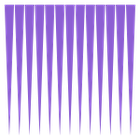
Functional optimization methods for machine learning
Michaël Unser (EPFL, Lausanne)
type: advanced courses area: MAT-08
part of Summer School Mathematics and Machine Learning for Image Analysis
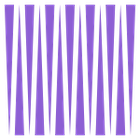
Mathematics and Machine Learning for Image Analysis
International Ph.D. Summer School
type: schools, seminars and other courses area: MAT-08
42 h period: 4 - 12 June 2024
referents: Serena Morigi, Alessandro Lanza
